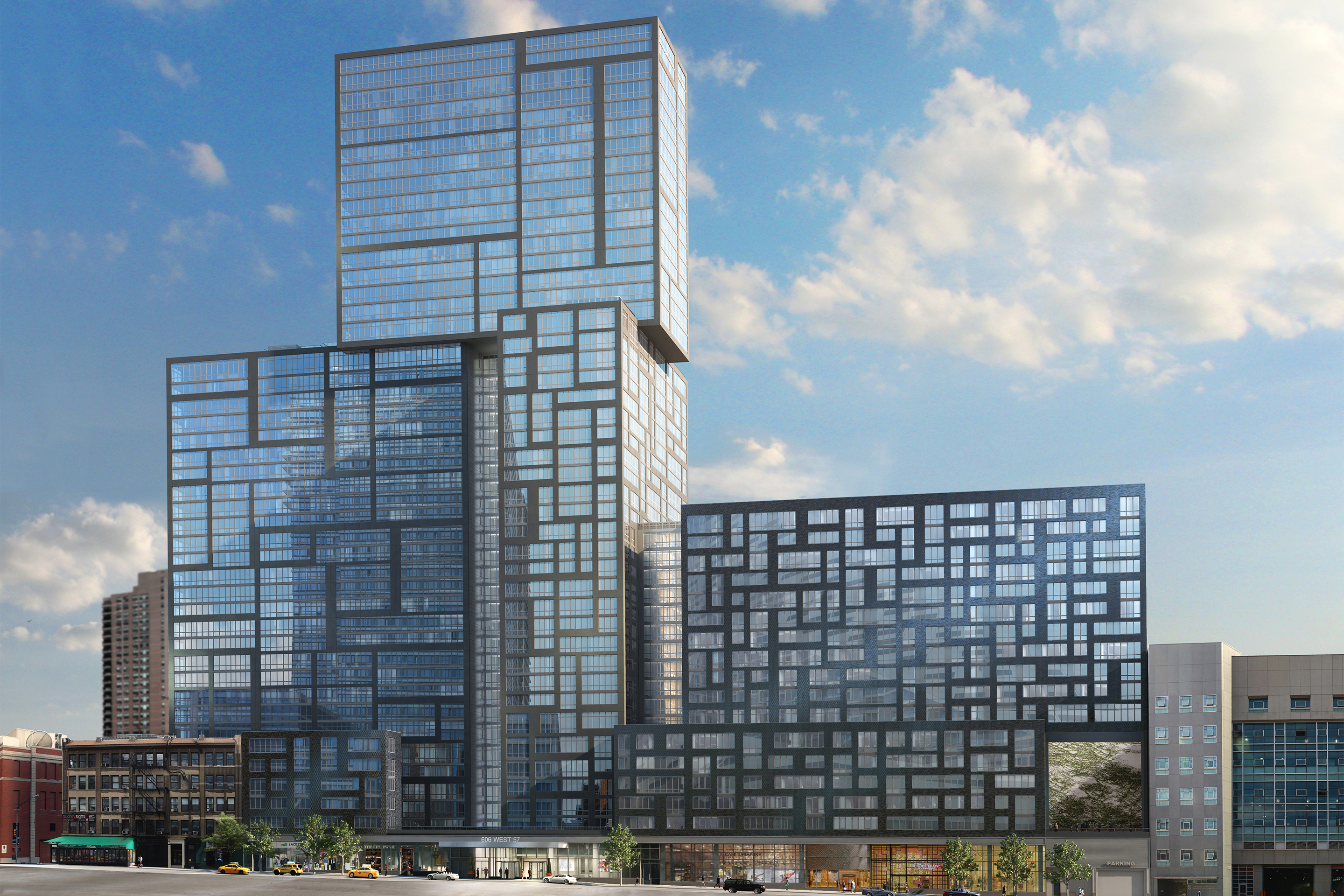Trending
The Max muse
The Arquitectonica-designed stacked Midtown rental has an inventive aesthetic but is still likely to go unappreciated

Most successful New York City architecture firms are uninspiring at best. Even if they weren’t lackluster when they launched here, they are by the time the city is done with them.
And then there is Arquitectonica. In ways both subtle and outlandish, the Miami-based firm manages (in a good way) to be the odd firm out.
The latest example of its work is at the Max at 606 West 57th Street, where the oddity of the design reveals itself only by degrees.
This 44-story rental building — which was developed by TF Cornerstone and sits just a half a block east of the Hudson River — completed construction at the end of October and began leasing its 1,000-plus units earlier this year. Listings on StreetEasy currently range in price from $2,999 a month to just over $8,100.

Bernardo Fort-Brescia
Generally speaking, what is designed and built in Miami almost never works in Manhattan or New York’s other boroughs. In this case, however, Arquitectonica — which also has offices in Manhattan, Los Angeles and several locations in South America, Europe and Asia — has managed to defy those odds.
It also did so in its 2006 expansion of the Bronx Museum of the Arts on the Grand Concourse, where it crafted a stunning, bone-white accordion design.
But not all of its New York City projects have been aesthetic winners.
Its Westin Hotel Times Square, completed in 2002, is one of the most ungainly structures ever built in Manhattan, and it has hardly improved with age.
But Arquitectonica shows undeniable daring and inventiveness in its quest for novelty, even if that sometimes means a project’s design slips out of control.
And given that the firm has designed so many projects — as of June it had wrapped work on at least 240 U.S. projects, with 100 more in the design phase — there are always going to be standouts and disappointments.
The firm’s other notable New York projects include the master plan for Hudson Yards, the United Nations Peacekeepers Memorial, MiMA on West 42nd Street and the High School for Construction Trades, Engineering and Architecture in Queens. Many would say the firm’s dominant architectural style is Deconstructivism, with all its strange liberties and forced asymmetries. But the firm doesn’t view its style as set.
“Everything that I do is angular and set at 45 degrees. Or everything I do is white. Or everything I do is curvy, and that’s my style, and every building is my signature.’ We don’t aspire to be known for a certain style,” Fort-Brescia told The Real Deal during a June interview. “If there’s a few buildings that appear to be part of a certain style, it’s accidental.”
For its part, the Max purposefully seems to own, and revel in, its massiveness. It takes up most of the south side of 57th Street between 11th and 12th avenues — a block made up of a collection of aggressively rectilinear cubes.
In all of this mass, the Max — which was reportedly named for Max Elghanayan, TF Cornerstone co-founder Frederick Elghanayan’s 30-year-old son, who died in January — has not a single curve or off-kilter angle. That is a major departure for Arquitectonica.
All the straight lines and right angles at the project amount to an exaggerated violation of expectations, something of an implicit rebelliousness against its other works.
The project belongs to what might be called the “stacked boxes” aesthetic, pioneered by the Japanese architecture firm SANAA at the New Museum on the Bowery in 2007.
Fort-Brescia described the Max as “made of multiple buildings that are sort of piled over each other, teetering, cantilevering over the other one.”
“It’s made of single pieces, but it reads as one statement,” he said in June. “That shows you how we navigate.”
At the Max, depending on how they are counted, there are five of these stacked crates, mostly conceived as slabs aligned (with one exception) along 57th Street.
Although in this case the Deconstructivist idiom is not prominently at play, it does shine through in the building’s syncopated windows. Not only is there a willfully arbitrary quality to the way the windows interact with one another, but the patterns, which are outlined in bold black lines, differ on each box. They range from relatively staid on the uppermost box to a chaotic quilt of forms on the westernmost.
This design works better and seems more interesting conceptually than it does in the flesh. The culprit here is good old-fashioned value engineering. The tinny articulation of the surface feels insufficient, as does the unanticipated intrusion of passages of brick into glass and steel.
In addition, the general darkness of the glass, along with the metal and the brick, suppresses the liveliness of the window patterns, reducing the façade to a dull state of homogeneity. For that reason, to most pedestrians, the Max — reportedly the second-largest residential building in New York City, behind Moinian Group’s nearby Sky — will seem like yet one more massive Midtown development. Unfortunately, its wit and style will most likely pass unnoticed and unappreciated. But that doesn’t mean renters aren’t already lining up. The project is reportedly more than 80 percent leased up.




